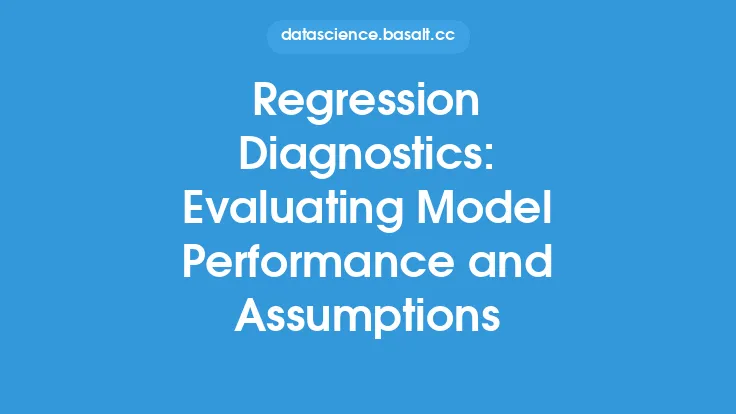Model interpretability is a crucial aspect of machine learning that has gained significant attention in recent years. As machine learning models become increasingly complex and pervasive in various industries, the need to understand how they make predictions and decisions has become more pressing. Model interpretability refers to the ability to explain and understand the decisions made by a machine learning model. In this article, we will delve into the ways in which model interpretability can improve model performance and reliability.
What is Model Interpretability?
Model interpretability is the process of understanding how a machine learning model works, including the relationships between the input features, the model's parameters, and the predicted outcomes. It involves analyzing the model's behavior, identifying the most important features, and understanding how the model uses these features to make predictions. Model interpretability is essential for building trust in machine learning models, as it allows developers to identify potential biases, errors, and areas for improvement.
Benefits of Model Interpretability
Model interpretability offers several benefits that can improve model performance and reliability. Firstly, it allows developers to identify the most important features that contribute to the model's predictions. By understanding which features are driving the model's decisions, developers can refine the model by selecting the most relevant features, reducing the risk of overfitting, and improving the model's generalizability. Secondly, model interpretability helps to identify potential biases in the model. By analyzing the model's behavior, developers can detect biases in the data or the model's parameters, which can lead to unfair or discriminatory outcomes. Finally, model interpretability enables developers to debug and refine the model, reducing the risk of errors and improving the model's overall performance.
Techniques for Improving Model Interpretability
Several techniques can be used to improve model interpretability. One of the most common techniques is feature importance, which involves analyzing the contribution of each feature to the model's predictions. Another technique is partial dependence plots, which show the relationship between a specific feature and the predicted outcome. Other techniques include SHAP (SHapley Additive exPlanations) values, LIME (Local Interpretable Model-agnostic Explanations), and tree-based models, such as decision trees and random forests. These techniques can be used to analyze the model's behavior, identify the most important features, and understand how the model uses these features to make predictions.
Model-Agnostic Interpretability Methods
Model-agnostic interpretability methods are techniques that can be applied to any machine learning model, regardless of its type or complexity. These methods include permutation feature importance, which involves randomly permuting the values of a feature and measuring the decrease in model performance. Another model-agnostic method is anchors, which involves identifying a set of features that are sufficient to explain the model's predictions. Model-agnostic methods are useful for analyzing complex models, such as neural networks, and for comparing the performance of different models.
Model Interpretability and Model Performance
Model interpretability is closely related to model performance. By understanding how a model works, developers can refine the model to improve its performance. For example, by identifying the most important features, developers can select the most relevant features, reducing the risk of overfitting and improving the model's generalizability. Additionally, model interpretability can help to identify potential biases in the model, which can lead to unfair or discriminatory outcomes. By addressing these biases, developers can improve the model's performance and reliability.
Model Interpretability and Model Reliability
Model interpretability is also essential for building reliable machine learning models. By understanding how a model works, developers can identify potential errors or biases in the model, which can lead to unreliable outcomes. For example, if a model is biased towards a particular group or outcome, it may produce unreliable results. By analyzing the model's behavior and identifying potential biases, developers can refine the model to improve its reliability. Additionally, model interpretability can help to identify potential issues with the data, such as missing or noisy values, which can affect the model's reliability.
Challenges and Limitations of Model Interpretability
While model interpretability is essential for building trust in machine learning models, it also presents several challenges and limitations. One of the main challenges is the complexity of modern machine learning models, which can make it difficult to understand how they work. Additionally, model interpretability techniques can be computationally expensive and may require significant resources. Furthermore, model interpretability may not always be possible, especially for complex models or models with a large number of features. Finally, model interpretability may not be sufficient to guarantee model performance or reliability, as other factors, such as data quality and model selection, also play a crucial role.
Future Directions of Model Interpretability
The field of model interpretability is rapidly evolving, with new techniques and methods being developed to improve our understanding of machine learning models. One of the future directions of model interpretability is the development of more sophisticated techniques for analyzing complex models, such as neural networks. Another direction is the integration of model interpretability with other machine learning techniques, such as model selection and hyperparameter tuning. Finally, there is a growing need for model interpretability techniques that can be applied to real-world applications, such as healthcare and finance, where model reliability and performance are critical.
Conclusion
Model interpretability is a crucial aspect of machine learning that can improve model performance and reliability. By understanding how a model works, developers can refine the model to improve its performance, identify potential biases, and build trust in the model. Several techniques, including feature importance, partial dependence plots, and model-agnostic methods, can be used to improve model interpretability. While model interpretability presents several challenges and limitations, it is essential for building reliable and trustworthy machine learning models. As the field of model interpretability continues to evolve, we can expect to see new techniques and methods being developed to improve our understanding of machine learning models and to build more reliable and trustworthy AI systems.





